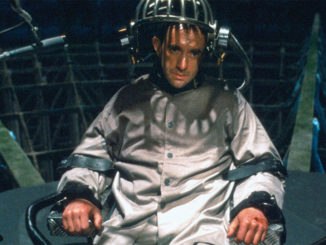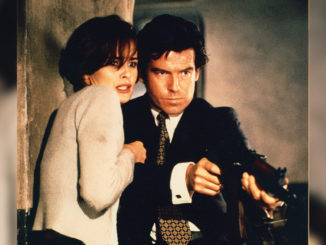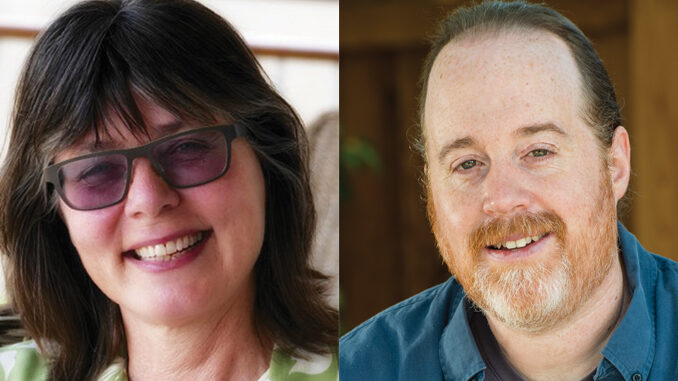
by Bill Desowitz
This year’s Oscar nominees for Best Editing explore the economic collapse of Wall Street in 2008 as a black comedy; return to an iconic post-apocalyptic world, as well as a galaxy, far, far away; go on a metaphysical journey in the frozen wilderness; and provide an inside glimpse of The Boston Globe’s Pulitzer Prize–winning coverage of the Catholic Church sex scandal cover-up.
The nominated editors include Hank Corwin, ACE (The Big Short), Margaret Sixel (Mad Max: Fury Road), Stephen Mirrione, ACE (The Revenant), Tom McArdle (Spotlight), and Maryann Brandon, ACE, and Mary Jo Markey, ACE (Star Wars: Episode VII – The Force Awakens).
Corwin, who additionally snagged the LA Film Critics Award for Best Editing as well as an Eddie Award for Best Edited Feature Film (Comedy) from the American Cinema Editors, in addition to being nominated for a BAFTA Award, had two great challenges with The Big Short, which was helmed by comedy director Adam McKay: How to make sense of the complicated economics surrounding the bursting of the housing bubble, and how to make the brokers who profited from it seem sympathetic.
Fortunately, Corwin had a lot of great footage from a talented acting ensemble, including brilliant on-set improvisation from Christian Bale (a Best Supporting Actor nominee for his role) and Steve Carell.
“I initially started cutting each grouping differently,” Corwin explains. “Christian Bale’s Michael Burry character was very locked within himself and closed down. And I tried to make the editing there almost subliminal and very quiet. And then you had Steve Carell’s character, Mark Baum, who was very overt and bombastic, so I tried to make that editorial really over the top. It was aggressive and not very pretty — but deliberately so.
“So much was a process of discovery,” he continues. “Everybody started from his own place but ultimately, when they went down, their plight became the same. Adam Davidson, the financial advisor, told me that people who shorted became physically ill; they fell apart; they broke down. I tried to bring that into the cutting toward the end when it folded into one style.”
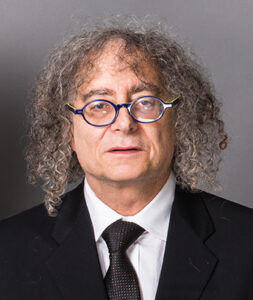
Photo by Matt Harbicht
Corwin credits McKay’s improv background and talent for comedy as the reasons it all comes together so brilliantly. The unscripted moments help humanize the brokers, particularly quiet moments when the actors didn’t realize they were on camera. “My biggest task, I thought, was to make these people not seem like cyborgs, repeating facts and figures.” For this, he had a secret weapon that McKay encouraged him to pursue: the use of time-lapse stock footage for navigating through the chaotic, absurd and surreal events that comprise the narrative.
“It’s not that long ago that this happened, and I thought it was really important to contextualize what was going on in the country and what the stakes were because so much of what these people do is an abstraction,” Corwin explains. “I used the ‘Money Maker’ song by Ludacris to demonstrate that this was a culture of inveterate greed. These little things became like time capsules. We just decided to make it fun and to make it a ride.”
Sixel, who also won the ACE Eddie Award for Best Edited Feature Film (Dramatic) and was runner-up for the LA Film Critics Best Editing Award, in addition to being nominated for a BAFTA Award, had the great advantage on Mad Max: Fury Road of being director George Miller’s wife. Indeed, even though this was her first stab at the dystopian road picture and they have different sensibilities, he wanted her sense of rigor, fluidity and elegance.
“As George’s editor, I am in a unique position as I can be honest without fear of being fired,” Sixel says. “But he has taught me that if I am going to be critical, I should offer up a solution. So I never criticize unless I feel I have a better way of doing something. I have become a good problem solver.”
This trait came in very handy during a difficult two-year post period when Warner Bros. wanted to see if the filmmakers could make the film work without the studio’s help. But Sixel conceded that they couldn’t. As a result, for the first year of post, they didn’t have the opening and closing Citadel scenes.
“Most days, we would get between eight and 20 hours of material,” Sixel recalls. “Endless footage of vehicles travelling, at the most 40 kilometers per hour [25 miles an hour], and you have to turn it into a thrill ride. It was a delicate balancing act — to neither shortchange sequences nor exhaust the audience. It was tricky rhythmically going from intense action to slower, more poetic moments. The music also helped to tie them together so they didn’t feel odd.
“I gave each moment its best shot,” she adds, “and only once I had a very refined cut did I feel justified in dropping material.”
However, pushing back the release date gave Sixel a second wind and the stamina to keep plugging away. “There was pressure to cut the film down to 100 minutes, but I didn’t want to cut too deeply and brutally, where logic and the musicality of sequences were sacrificed. I was always conscious that the third act was to be an 18-minute chase/race sequence and didn’t want the audience to be tired of cars smashing into each other right at the climax of
the film.”
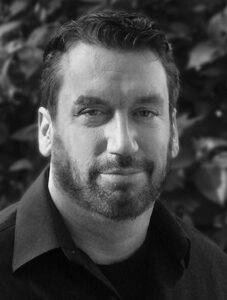
It turns out that that last year’s Academy Award winner for Best Picture, Birdman or (The Unexpected Virtue of Ignorance), was merely a dress rehearsal for The Revenant for director Alejandro González Iñárritu and his crew, including editor Mirrione, also an ACE Eddie and BAFTA nominee. It was shot in sequence (200 hours worth of material) mostly in the Canadian Rockies (with and without sufficient snow), and there was very little dialogue to anchor the narrative. And because of the wide lenses and vast landscape, a lot of the stunning camera work by Emmanuel Lubezki, ASC, AMC, was on cranes, which changed the rhythm.
“You’re figuring it out as you go along, and you’re discovering things and making adjustments,” comments Mirrione, who has been Oscar- nominated twice before, winning for Traffic (2000). “And that takes a lot of time to do in a sensitive, thoughtful way so you’re staying true to the DNA of the piece.” As with Birdman, rehearsals were blocked, but there were many more moving pieces to play with.
“The challenge of the opening battle was point of view,” Mirrione adds. “If you spent the entire battle as one long take, then it becomes monotonous.” Therefore, they found ways of changing the emotional point of view from realism to more abstract moments.
The much talked-about bear attack contains even greater intensity and sublimity, creating empathy for both the grizzly, which was a mother protecting her cubs, and Leonardo DiCaprio’s fur trapper Hugh Glass, who emerges from the death grip as a more spiritually aware person.
“The level of complexity to the cut and the storytelling increased exponentially,” Mirrione explains. “We had a mountain of technical challenges to climb in order to accomplish something that I hope comes across as poetic and expressive in the editing. I’m proud to have been part of a team who worked so hard to create such a powerful and realistic portrayal. The opportunity to work with such a high level of artistry regarding the images, sound, music and performances gave us so much freedom in the cut and power in the ability to shape emotion; I really hope that’s one of the things that people are connecting with.”
McArdle provided clarity and restraint to the fact-based journalism procedural Spotlight (his fifth collaboration with director Tom McCarthy). The challenge was juggling shifting points of view between Michael Keaton’s editor and his three Spotlight reporters, played by Mark Ruffalo, Rachel McAdams and Brian d’Arcy.
“We tried to stay focused on the investigation,” McArdle recalls. “It was important to keep the film moving, to keep the scenes tight and to make sure things were clear for the audience. We had screenings every three weeks and tried to track what information people were following and what they were missing. We would then make adjustments to the cut to help with clarity.”
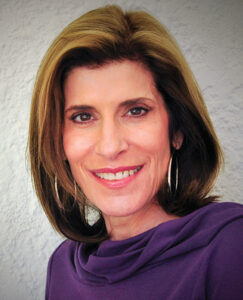
And the film was true to the investigation, providing an inside glimpse into the particular tension between insiders and outsiders at the newspaper and within the larger community, with the Roman Catholic Church at the epicenter of power.
“A challenge with Spotlight was to take a film about reporters making phone calls, knocking on doors and making spreadsheets, and to keep it interesting — and to make it feel suspenseful. As an editor, you work hard so that every beat feels right and there isn’t one unnecessary moment,” McArdle concludes.
Although Star Wars: The Force Awakens contains the same spirit of fun and adventure as the first trilogy, the objective for co-editors Brandon and Markey — ACE Eddie nominees as well — was to avoid imitating the same cutting style as the other films in the franchise. This was the mandate of director J.J. Abrams to his long-time editorial team.
“All we had to do was to be sensitive to that, choose the right pieces of film, and keep it alive in the cutting,” explains Markey. “Because of the way Maryann and I split up the film — I cut both the beginning and the end — I have to say both were challenges. We actually struggled with that very short scene in the hut of Lor San Tekka [Max von Sydow]. It was originally shot to be a longer scene, but we had concerns about whether we were spending too much time with a character who was shortly to depart the story, and creating too much delay getting to the heart of things. J.J. shot some material so we could shorten the scene and show Oscar Isaac’s character Poe to be a wisecracker.”
Meanwhile, Brandon insists that The Force Awakens is not a reworking of the original Star Wars [1977], beginning with its female protagonist, Rey (Daisy Ridley), who’s very different from Luke Skywalker (Mark Hamill).
“She is barely surviving her lone existence,” Brandon emphasizes. “Her attitude toward space and adventure is completely different; she only very reluctantly leaves the planet. That’s the beauty of our film: You might find yourself in a familiar setting but our new characters have very different lives. I was very aware of this fact while I was cutting. Han Solo [Harrison Ford] doesn’t show up until 35 minutes into the film, and when he does, I made sure his interaction with Rey and Finn [John Boyega] was through their point of view. With the exception of the soft wipes we used for transitions, I believe we made a truly unique and original J.J. Abrams film.”
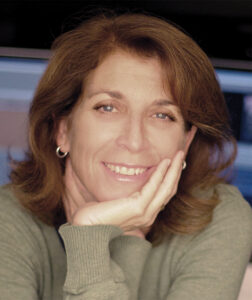
According to Markey, “Han’s introduction seemed perfect to us — bringing him and Chewie back to the Millennium Falcon while it is being piloted by Rey and Finn. The situation itself makes for the perfect blend of old and new. We did do some re-structuring
to find the right moment to introduce Leia [Carrie Fisher], whom we originally met earlier in the film, but in a less meaningful way. Seeing her for the first time through Han’s eyes was so much more touching.”
And why do Brandon and Markey believe they were nominated by their Academy and ACE peers?
“That so many reacted so positively to the movie — both Star Wars devotees and Star Wars newcomers — says to me that the movie speaks to them,” responds Brandon. “If I can cut a movie that does that then I know I’ve made the right choices in putting it together. I’m guessing the members of ACE and the Academy must have felt that way too, which is so rewarding.”
Adds Markey, “Of course, it’s hard to say what led our fellow editors to nominate us, but here are what I think some of the strong points of the cutting are: I always try to keep the characters, their natures, psychology and emotions paramount when I am editing. So no matter what might happen in a scene — no matter how strong the line of dialogue or how funny the joke — if it is not serving the truth of the character, it doesn’t belong. I try to keep the characters’ emotional states highlighted at the center of action scenes, too, always balancing the cut of a visual effects- or sound effects-heavy scene with shots that show how our characters are experiencing the moment to keep them the center of the action.”




